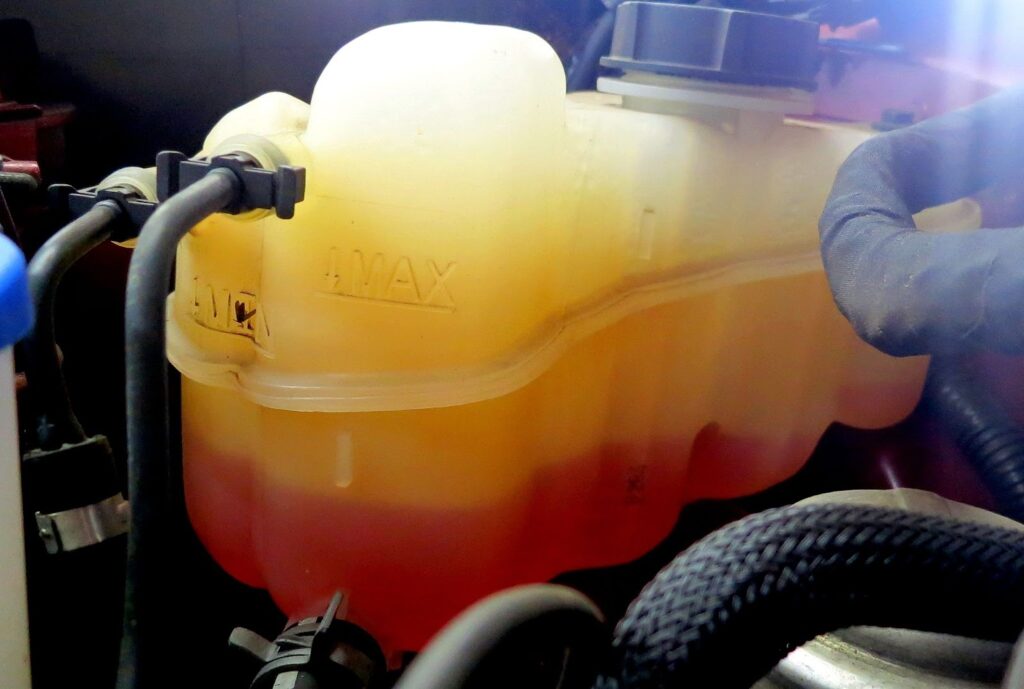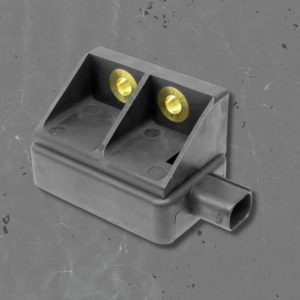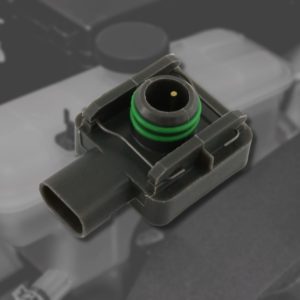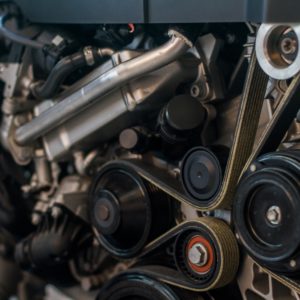The coolant reservoir or coolant overflow tank is an important part of your vehicle’s cooling system. While the radiator also stores coolant, it needs the coolant reservoir so that it can reduce the pressure when the coolant expands due to increased temperature.
The coolant reservoir can fail because of several reasons. It’s usually made of plastic, which can become brittle since it’s regularly exposed to heat. After some time, the reservoir can also become more susceptible to vibration and pressure. If your vehicle’s coolant reservoir has cracked, then it might show the following symptoms:

Coolant Leaks
If you notice that there are puddles of liquid accumulating under your vehicle, you should verify if it’s actually coolant and not water from your vehicle’s air-conditioning system. Leaking coolant can be an early sign of a cracked coolant reservoir. Spotting this symptom immediately can prevent worse issues down the line.
Remember that coolant is toxic since it’s a mix of glycol and water. If you spot a coolant leak, clean it immediately to prevent your pets from ingesting the compound. Coolant is also considered hazardous waste, so it should be thrown away in a sealed container and sent to service centers or auto repair shops.
Coolant Odor
Coolant smells sweet when it’s exposed to air or when it burns, so check for leaks if you smell something sweet around your vehicle.
Low Coolant Level
If your engine’s temperature is abnormally high, even though it isn’t overheating, it could be a sign that your radiator might be running low on coolant. While your vehicle does need coolant refills every now and then, frequent coolant refills can be a sign of a ruptured coolant reservoir.

You can have a leaking coolant reservoir without noticing other signs because the crack can be small, which means that coolant will evaporate slowly. Knowing when your radiator’s coolant levels are dropping can be difficult since the radiator isn’t see-through. That’s why you should regularly check your vehicle’s temperature gauge.
Overheating
If the coolant reservoir has leaked too much coolant, there might not be enough to keep the engine cool. When an engine’s temperature exceeds its intended operating temperature, the engine’s cylinders or pistons can warp and deform, causing a lot of problems. The resulting engine damage can be extensive, and repairing it can be quite costly.
Types of Coolant Reservoirs
Degas Tank
There are two basic types of coolant reservoirs. One is a degas tank that simply stores coolant while the engine is warm and the expanding coolant is pushed past the radiator cap’s spring-loaded seal.
On this type of reservoir, as the coolant contracts while cooling, the degas bottle allows the coolant to return to the radiator through the same hose by way of the small one-way valve in the center of the radiator cap.
This kind of tank isn’t designed to hold pressure and won’t typically cause engine damage even if it does leak.

This tank has two chambers: the left hand chamber is the coolant degas tank and the right hand chamber is for the windshield washer. Notice that the filler cap for this particular 1990s Ford pickup truck-style reservoir just snaps on and has a tether attached to keep it from getting lost. Reservoirs like this one can leak but usually don’t unless they’ve been physically damaged.
Surge Tank with Screw-on Filler Cap
The other type of reservoir is actually a heavy-duty pressure-holding surge tank with a robust screw-on filler cap. This type reservoir is made to hold pressure but can release it externally by way of the valves in the cap if the cooling system pressure is excessive for whatever reason.
Reservoirs like this one can crack and leak. If they are not replaced when they begin to leak, the engine can be destroyed by coolant loss.

How Much Does a Replacement Coolant Reservoir Tank Cost?
Coolant reservoir tanks cost anywhere from $10 to $90 depending on their size and brand. Coolant reservoirs can also be sold with other cooling system components, such as the radiator and cooling fan assembly.
Where to Get a Coolant Reservoir for Your Ride
Coolant reservoir leaks can take a toll on your ride’s cooling system, resulting in issues that require wallet-draining repairs. Fortunately, if you’re in the market for a replacement, CarParts.com has you covered with our wide array of OE-grade coolant reservoirs.
With our vehicle selector, you can narrow down our wide selection to the coolant reservoirs that are compatible with your ride. Our parts come with accurate and detailed fitment information, so you’re sure to get exactly what your car needs to get back on the road.
We source our products from reputable brands in the industry to ensure they perform just like your stock coolant reservoir. And don’t worry about going over budget, as we offer our parts at unbeatable prices.
Need a new coolant reservoir as soon as possible? We ship from strategically located warehouses across the country, so you can get your order in as fast as two business days.
Check out our coolant reservoir replacements today!
Any information provided on this Website is for informational purposes only and is not intended to replace consultation with a professional mechanic. The accuracy and timeliness of the information may change from the time of publication.






























